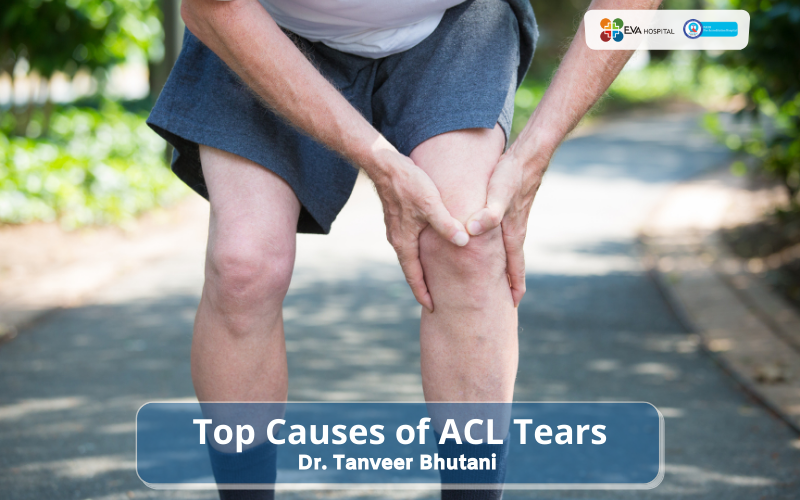Can an Acl Injury Lead to Arthritis in the Future?
Introduction
Knee ligament injuries treatment or ACL tears are dreaded by all and are one of the most common athletic injuries and can prove to be ravaging especially for a young athlete, causing absences from sports teams, substantial restoration, and an interruption to normal life.
Most athletes, their parents and coaches are worried about getting back to activity and not about what might happen in a few years.
But the hard fact is that this injury can lead to some serious long-term complications.
The knees are one of the most vital joints in the human body, held together by a strong yet vulnerable network of stabilizing ligaments, tendons, cartilage and bones.
The ligaments of the knee have the difficult job of keeping thigh bones, the largest in the body, connected to the tibia and fibula.
The anterior cruciate ligament (ACL), & other knee ligaments guard against front-to-back/ movements and vice-versa.
However, sudden halts, twists or pivots, in addition to an impact, can stretch it beyond its typical range of motion, leading to a tear or sprain of the ACL or the meniscus (thin cartilage in the knees).
Many people experience tears annually. They do not necessarily include only athletes, though the tear is more common in them.
A ruptured ACL cannot heal itself. The two main treatment options include ACL reconstructive surgery and physical therapy.
ACL and Arthritis
Studies have found out that about 75 per cent of people who have an ACL injury show arthritis findings on x-rays of their knee within 10-15 years of the injury.
These people face the possibility of managing knee arthritis as soon as they are in their 30s, a time when thoughts of arthritis are rare.
The chance of arthritis is especially higher in people who have also damaged the meniscus cartilage or articular cartilage along with the ACL tears.
The inflammatory cascade that starts after injury, alterations in joint biomechanics due to ACL deficiency.
Associated meniscus injuries and other factors making it more susceptible to the wear and tear of the protective cartilage on the ends of the bones become a reason for Osteoarthritis after an ACL injury.
The initial injury can cause damage to the joint cartilage in an unseen way. With a little ability to repair itself, the cartilage damage becomes more obvious over time.
Also, there may be a change in the mechanics of the knee after reconstructive surgery.
The initial signs of osteoarthritis typically arise after five to ten years of this injury.
However, every ACL tear is different and other factors, like repetitive knee injuries and weight gain, can also contribute to the early onset of osteoarthritis.
Surgical Overview
Surgical treatment for ACL reconstruction is the most popular treatment as of now, where a tendon graft is used to replace the ACL.
Those who choose ACL surgery to tend to have fewer ACL injury symptoms afterwards, a more predictable return to activities and maybe even less risk of developing Osteoarthritis compared to those with untreated ruptures.
The best time for ACL reconstruction surgery is at least three weeks after the injury and physical therapy afterwards to rebuild hamstring and quad strength is very vital.
ACL surgery shows positive results for active recovery and prevents knee deterioration. Most patients return to pre-surgery levels of activity.
The significant meniscus damage during an ACL injury, a total meniscectomy i.e. the surgical removal of the torn meniscus, at the time as ACL surgery can reduce the risk for developing arthritis significantly compared to those who have just partial meniscectomy.
Also Read: What is ACL injury and Does it Require Surgery
Bottom line
Knee ligament injuries like ACL tears are serious injuries that cause pain and time away from normal activity.
The ACL injury recovery time requires surgery and prolonged rehab efforts but the long term prognosis may not be good, with most people developing arthritis within a decade of injury.
A detailed and forward-looking discussion with your doctor and physical therapist can help develop a multi-layered treatment plan that could help you prevent or minimize Osteoarthritis and optimize the long-term health of the knee.
Dr Tanveer Bhutani at Eva Hospital is the best orthopaedic surgeon in Ludhiana for ACL reconstruction and has helped many youngsters recover from the tear and its after-effects






